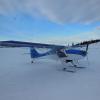Sign in to follow this
Followers
0

Master Switch Wiring
Started by
marshawk,
16 posts in this topic
Create an account or sign in to comment
You need to be a member in order to leave a comment
Sign in to follow this
Followers
0